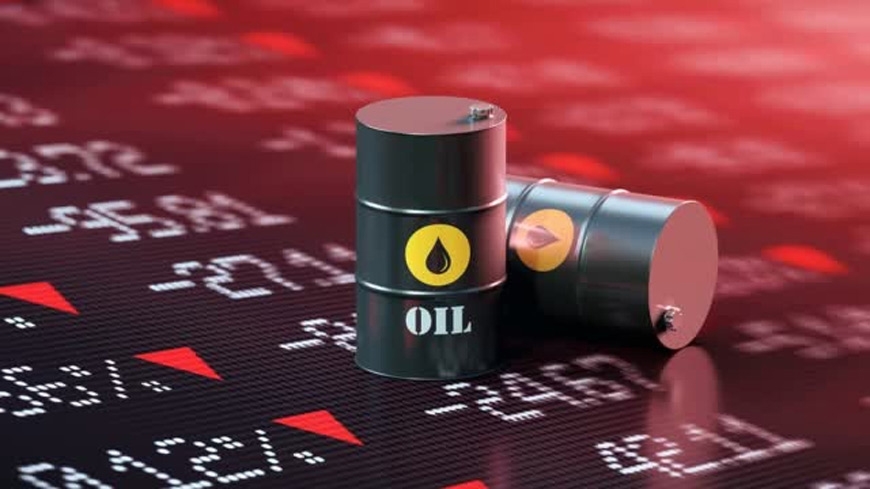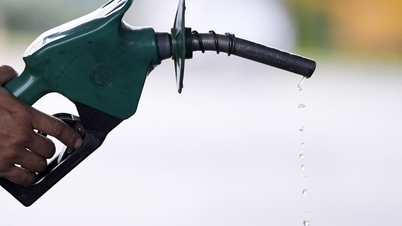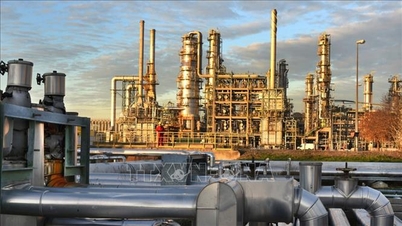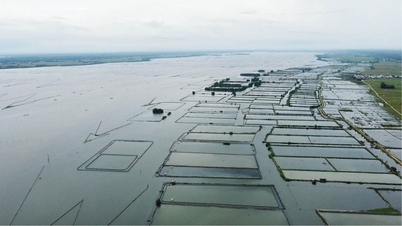Oil prices have reversed and fallen slightly after climbing nearly $2. WTI crude oil prices have gradually decreased to $69/barrel, Brent crude oil has stabilized at $74.03/barrel.
World oil prices
At the end of the trading session on June 28, oil prices increased by about 3%. According to Reuters , the sharp reversal of oil prices after a plunge of more than 2 USD in the previous trading session was due to the second consecutive week of decline in US crude oil reserves, which offset concerns that interest rate hikes by major central banks in the world could slow economic growth and reduce global oil demand.
 |
| Gasoline prices fell slightly at the beginning of trading session on June 29. Illustration photo: Foxbusiness |
Specifically, Brent crude oil futures increased by 1.77 USD, equivalent to 2.5%, to 74.03 USD/barrel, while US WTI crude oil prices increased by 1.86 USD, equivalent to 2.8%, to 69.56 USD/barrel.
The US Energy Information Administration (EIA) said on June 28 that US crude oil inventories fell by 9.6 million barrels in the week ending June 23, far exceeding the 1.8 million barrel decline forecast by analysts in a Reuters poll and also much larger than the 2.8 million barrel decline in the same period last year. This decline also exceeded the five-year average from 2018 to 2022.
"Overall, these numbers are contrary to what many people believe is an oversupplied market. This report could be the bottom (for oil prices)," said Phil Flynn, an analyst at Price Futures Group.
However, investors remain cautious that rising interest rates could slow economic growth and reduce oil demand.
Reuters reported that the world's leading central bank leaders have reaffirmed the need for further policy tightening to curb inflation. Fed Chairman Powell did not rule out the possibility of raising interest rates at successive Fed meetings while European Central Bank (ECB) President Christine Lagarde confirmed expectations that the bank will raise interest rates in July, calling the move "likely".
The 12-month forward spreads for Brent and WTI — pricing drivers that indicate higher spot demand — are both at their lowest since December 2022, suggesting “reduced concerns about the potential for supply shortages,” said analysts at energy consultancy Gelber and Associates.
Some analysts expect the market to tighten in the second half of the year, citing ongoing supply cuts by OPEC+ and Saudi Arabia's voluntary production cut of an additional 1 million barrels per day in July.
 |
| Gasoline prices continue to fluctuate. Photo: Oilprice |
In China, the world’s second-biggest oil consumer, annual profits at industrial companies extended double-digit declines in the first five months of the year as demand slumped, bolstering hopes for more policy support for the faltering economic recovery from Covid.
Data from the National Bureau of Statistics (NBS) showed that profits fell 18.8% year-on-year in the first five months of the year. In May alone, profits fell 12.6%, narrowing the 18.2% decline in April. The unemployment rate also rose to a new high of 20.8%, according to the NBS.
Domestic gasoline prices
Domestic retail prices of gasoline on June 29 are as follows:
E5 RON 92 gasoline is not more than 20,878 VND/liter. RON 95 gasoline is not more than 22,015 VND/liter. Diesel oil not more than 18,174 VND/liter. Kerosene not more than 17,956 VND/liter. Fuel oil not exceeding 14,587 VND/kg. |
MAI HUONG
Source





![[Photo] Binh Trieu 1 Bridge has been completed, raised by 1.1m, and will open to traffic at the end of November.](https://vphoto.vietnam.vn/thumb/1200x675/vietnam/resource/IMAGE/2025/10/2/a6549e2a3b5848a1ba76a1ded6141fae)
































































































Comment (0)